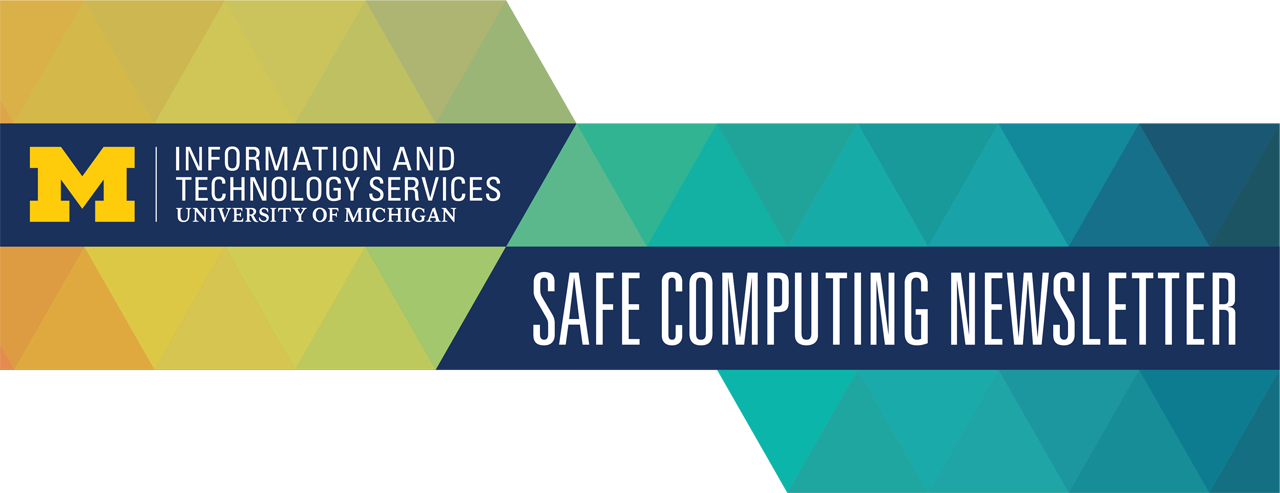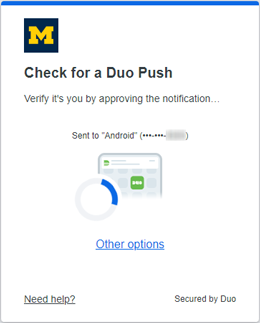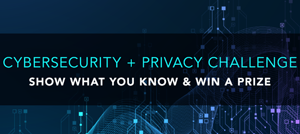ITS Information Assurance relies on engaged and collaborative Security Unit Liaisons (SUL) to support the U-M community in IT security, privacy, identity access management, policy and compliance. The liaisons are vital partners in protecting the university’s digital assets.
We asked Matt Bidlingmeyer, IT Program Manager in the College of Literature, Science, & the Arts (LSA) and a Security Unit Liaison, to chat with us about his experience and priorities.
Stay tuned for future SUL interviews and, if interested in participating, reach out to Bridget Weise Knyal ([email protected]).
Expanding Awareness
Matt Bidlingmeyer, IT Program Manager in LSA, has a large audience to consider when sharing cybersecurity information across the LSA community. Because he knows people consume information in different ways, he makes a point to use digital signage, articles in the Innovate Newsletter, and blurbs in the Chief Financial Officer’s weekly administrative emails. His topics include what is top-of-mind in cybersecurity and the scam of the month.
While these methods have been successful, Bidlingmeyer notes, “We can send things out, and people can read them, but we also know people can ignore them.” His security team strives to enhance their connection with departments by meeting with them about their unique security concerns given their business or research needs.
During this type of meeting, Bidlingmeyer points out: “Here are the things that you might get specifically targeted for” and reinforces the message “Here's how to reach us. We are here to help.” Also, he emphasizes that these meetings are a valuable opportunity to put a face with a name.
New Security Fellowship Program
Bidlingmeyer is excited about taking engagement a step further with LSA Technology Services’ (TS) new Security Fellowship Program. Beginning as a pilot in January 2024, their cybersecurity team aims to build awareness and foster career development of interested TS staff. Bidlingmeyer elaborates, “Participants will spend five months working with the cybersecurity team to learn the ins and outs of cybersecurity operations in LSA. After the pilot, any of the 180 full-time employees in TS can express interest in being invited into the rotating fellowship program.”
One goal of the program is that a staff member who has been through it can bring awareness and knowledge gained during the experience back to their role in their department. Bidlingmeyer explains, “That person might be in Tier One or talking to a faculty member, and they can help reinforce the message because hopefully we've done a very good job teaching them what's important and why it matters.”
(ITS has a similar program called the ITS Cross-Training Opportunity Program.)
Tips that Resonate
When talking with people who are not immersed in cybersecurity, Bidlingmeyer recommends trying to “engage with people to understand where they're coming from based on their experiences and meet them where they are, which is not necessarily where we think they are.” For example, he finds that some instructors may not think they work with sensitive data because they’re thinking of social security numbers and not the FERPA-protected student information they work with regularly.
As another example, when a person does not see their device as having anything important on it, he uses smart light bulbs as an example: “You know, threat actors can leverage the internet of things – devices like smart light bulbs. If your computer is connected to the network, it can be a vector of attack.” Finding a message or example that resonates is key to Bidlingmeyer’s approach.
When it comes to phishing emails, Bidlingmeyer is intentional about encouraging reporting. He and his team make a point to say, “Thanks for reporting this. We love that you're paying attention.” If the email is legitimate, they add, “This one happens to be legitimate, but if there's ever any worry, please reach out. We would love to see all sorts of false positives rather than something that actually is an issue go unreported.” Bidlingmeyer’s staff uses this approach to combat what he calls a cultural tendency among staff and faculty to feel they are bothering IT.
Helpful Tools and Resources
Bidlingmeyer values Crowdstrike Falcon as an endpoint detection and response (EDR) tool because it has a low rate of interference. He elaborates, “We need to do very minimal allow-listing of applications or programs. We have so many researchers doing so many unique things that if it didn't have a low rate of interference, the exception list would either have to grow ridiculously, or our researchers would be frustrated with us.”
ITS Information Assurance was engaged by Bidlingmeyer to develop a new resource this past summer – the Online Harassment & Abuse Mitigation Checklist. He collaborated with a team led by Sol Bermann, Executive Director of Information Assurance and Chief Information Security Officer, and Asmat Noori, Information Assurance Assistant Director to create tools for Dr. Earl Lewis, Thomas C Holt Distinguished University Professor of History, Afroamerican and African Studies, and Public Policy; and Director/Founder of the Center for Social Solutions. Bidlingmeyer says the checklist will provide comfort and resources to people across the university as more and more people are affected: “Even if they're not getting harassed, they know their colleagues are, even if they're at other universities. We're giving them tools to both proactively and reactively approach those scenarios.”
As a go-to resource, Bidlingmeyer always appreciates the Safe Computing website, particularly the Sensitive Data Guide. He notes, “I love the examples because they really resonate with people. The information about where people can store their data is just as important.”











